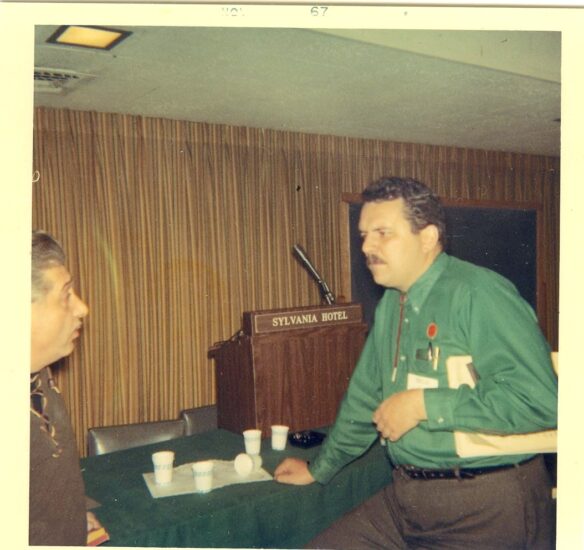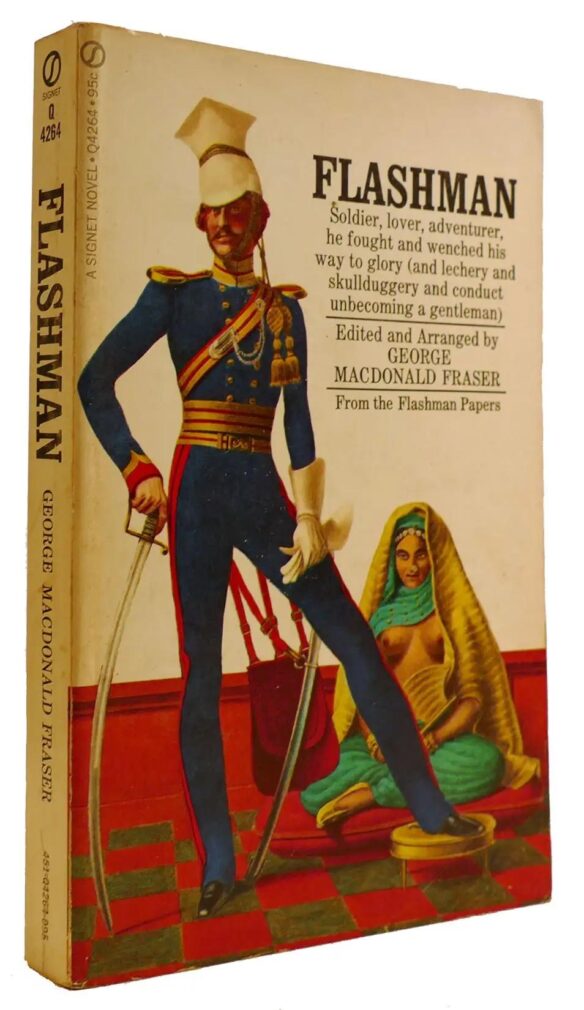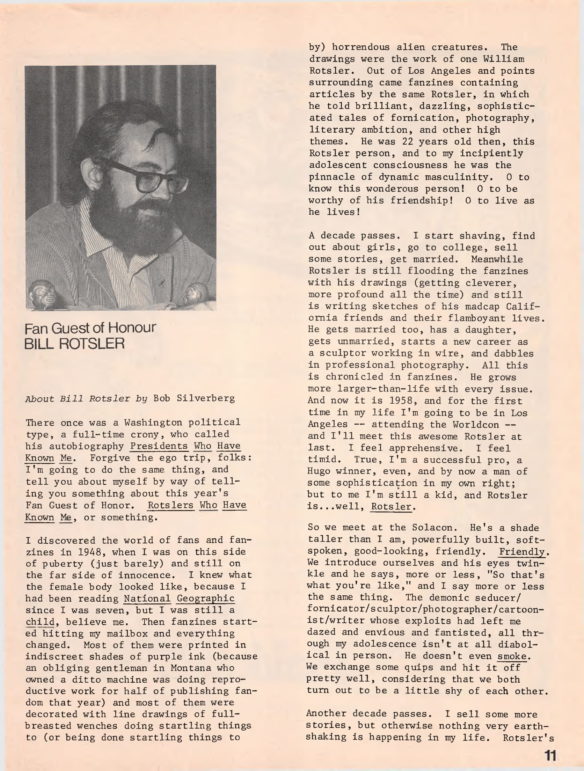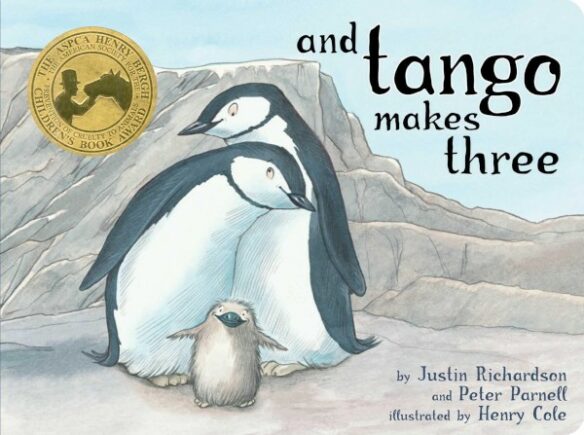(1) NANOWRIMO SITE VANISHES. [Item by Dan Bloch.] Earlier this week NaNoWriMo shut down their website without any notice. People are commiserating on Reddit.
What a freaking waste. A huge, passionate and vibrant community founded on conquering the impossible, brought down by gross mismanagement and a refusal to listen to the community that gave it life.
I’ve been sad about this for a long time, but it’s definitely hitting home today, especially seeing the posts from people freaking out about losing their site data, since NaNoWriMo NEVER officially announced the shutdown on official channels to warn them.
We meant nothing to them, even in the end. Good riddance.

The Wayback Machine’s latest Nanowrimo.org screencap was May 27.
NaNoWriMo (National Novel Writing Month) announced in March that the organization was shutting down. They offered a lengthy explanation in “The State of NaNoWriMo – A Community Update – March 2025” on YouTube.
This followed in the aftermath of a controversy that erupted the previous September when they issued an equivocal statement about using AI – and it did not go unnoticed that NaNoWriMo is sponsored by ProWritingAid, a writing app that advertises AI-powered technology, including text rewrites – leading Zriters Board members Daniel Jose Older, Cass Morris, and Rebecca Kim Wells to immediately resign.
(2) EXTRA CREDIT READING. Two sff news periodicals posted today:
- Jason Sanford’s Genre Grapevine for May 2025 at Patreon; and
- David Langford’s Ansible® 455, for June 2025.
(3) IGNYTE AWARDS VOTING OPENS JUNE 9. Public voting on The Ignyte Awards will begin June 9.
The Ignyte Awards began in 2020 alongside the inaugural FIYAHCON, a virtual convention centering the contributions and experiences of BIPOC (Black, Indigenous, and People of Color) in Speculative Fiction. Founded by L. D. Lewis and Suzan Palumbo, the awards were an attempt to correct representative gaps in traditional spec lit awards and have grown into a coveted and cherished addition to the awards landscape. The Ignytes seek to celebrate the vibrancy and diversity of the current and future landscapes of science fiction, fantasy, and horror by recognizing incredible feats in storytelling and outstanding efforts toward inclusivity of the genre.
(4) SAVE WHEEL OF TIME. Did a show ever have so many spokes persons? “Wheel of Time fans band together to save show after cancellation – petition gets over 50,000 signatures” says Radio Times.
Following the cancellation of The Wheel of Time after its third season, a petition has quickly racked up signatures from fans hoping to save the Prime Video fantasy show.
The petition, titled Save The Wheel of Time, has already got over 53,700 signatures and counting, with fans calling for the story to be finished and arguing that it “deserves to be told in full”.
The petition points not only to the third season’s strong critical and fan reception, but also to reported viewing figures, arguing for the show’s continuation by putting it in comparison with other fantasy shows The Rings of Power, House of the Dragon and The Witcher….
(5) FUTURE TENSE FICTION. The Future Tense Fiction story for May 2025 is “The Shade Technician,” by Harrison Cook, about urban heat and its health effects, as well as the privatization of critical infrastructure.
The response essay “The Limits of Heat Resilience” is by physician and heat researcher Pope L. Moseley.
Extreme heat is pushing up against our physiological limits. We can’t adapt our way out of the problem—we need to confront it directly.
(6) JOHN SCALZI Q&A. CollectSPACE starts their interview with an anecdote about the author’s research: “John Scalzi reconned Apollo 11 moon rock before turning it to cheese in new novel”.
…”I went to the Armstrong Air and Space Museum very specifically so I knew what the layout of the place was, so I could see the moon rock there for myself and so when I wrote about it, it would be reasonable to what is actually there,” said Scalzi in an interview with collectSPACE. “They had no idea.”
Had the docents approached him and asked why he was interested in the moon rock, they might not have believed him anyway. In “When the Moon Hits Your Eye,” released today (March 25), it is Virgil Augustine, the museum’s (fictional) executive director, who comes to realize what has happened, however impossible it might seem…
Then they follow with more conventional questions about the new book.
collectSPACE (cS): Was there a particular moment in your life that it just struck you, or how do you come up with the idea of writing a book about the moon turning into cheese?
John Scalzi: It was something that had been just rolling around my brain for a while, simply because it was just such an absurd idea that it almost felt like a challenge. You know, was this something that I could make something out of?
cS: Did you search to see if anyone else had written a book about the moon turning to cheese?
Scalzi: I didn’t, but if someone did, it wouldn’t have necessarily stopped me because there are so few super original ideas. you just accept that most of what you’re doing is not about what’s original, but what you can bring to that particular topic that nobody else has.
There are lots of children’s books about the moon being made of cheese, but they’re all picture books, so I felt that this was a pretty safe subject. Also, as soon someone mentions the topic, people are like, ‘Oh, it’s like Wallace and Gromit,’ because they go to the moon and it is cheese [in “A Grand Day Out With Wallace and Gromit” released in 1989].
This was something I was reasonably confident had been unexplored territory in the adult literature format, and certainly in the manner in which I did it, which was to structure it around a lunar cycle, rather than just one or two main characters….
(7) THE ONLY ONE WHO COULD INTERRUPT HARLAN WAS – HARLAN. Edwin L. Battistella reminisces about his introduction to parenthetical phrases in “What I learned from reading Harlan Ellison” at the OUPblog.
When I was in high school, I went through a Harlan Ellison phase….
…Stylistically, what stood out most was his use of parentheses. In the essays, Ellison used them all the time. In a random four-page section I count six parentheticals, some as long as a paragraph. Elsewhere, I found a couple that went on for more than half a page….
…Ellison used the parenthesis to amplify his outrage, to underscore his smart-alecky awareness, and even occasionally to poke fun at himself.
For a time, Elision’s style left a mark on me as a writer. I began including (what I thought were) pointed, witty asides in my essays and correspondence. I got away with it in high school, less so in college, and finally my wife convinced me to give it up. It was, she said, “too cutesy” and “distracting.”
Every now and then, I miss parentheses and trot a pair of parens out, but for the most part I’ve given them up. The style worked for Ellison, who managed to never be too cutesy and whose distractions were interesting, but I could not pull it off….
(8) BREATH MINT OR CANDY MINT? Chris Winkle argues “Why Literary Fiction Is a Genre” at Mythcreants. Here are a couple of excerpts. You’d need to read the article to see him make his case.
…In any widespread discussion of literary fiction, two contradictory ideas are bound to make an appearance. Some people advocate for one or the other, while others embrace both simultaneously. Let’s look at these two competing ideas.
- Literary fiction as the best fiction. Under this definition, any book of any genre can be considered literary fiction if it is good enough. This means that literary fiction is simply a prestige label given to a wide variety of books we admire. Let’s call this the prestige definition.
- Literary fiction as a distinct style of fiction. Under this definition, literary fiction has specific characteristics that distinguish it from non-literary books. These characteristics include realism, slow and detailed prose, and experimental style or form. Let’s call this the style definition.
You might think these two definitions would be at war with each other. Conceptually, they are. But while individual literary fans may take one side or the other, the community as a whole isn’t interested in resolving this contradiction. In fact, these definitions coexist by design.
That’s because both definitions are needed to send a bigger message: that literary fiction entails specific characteristics, and those characteristics are superior. Meaning, a book of any genre supposedly becomes better by adopting literary fiction conventions. That’s how it “transcends” its genre and becomes literary instead….
… This is why publishers already treat contemporary literary fiction like a genre. It’s a specific type of fiction that appeals to a specific audience of fans. Business-wise, that’s what a genre is. It’s used to match books with the readers who are inclined to purchase and enjoy them.
However, literary books don’t fit everyone’s idea of what genres are. The prestige definition is only partly responsible for this. I think a greater factor is that we love our favorite genres, so we want them to be more coherent and meaningful than they are. And when we assign meaning to them, it’s easy to make that meaning too restrictive. For instance, if we associate genres with a specific type of setting or plot, then literary books, which are distinguished by characteristics such as prose style, may seem like the odd group out….
(9) JOHN BOARDMAN (1932-2025). By Gary Farber. I was sorry to read Ansible’s report today: “John Boardman (1932-2025), US fan active since 1950 in cons, clubs and APAs, and treasurer of the 1967 Worldcon, died on 29 May aged 92.”
John was among the first fans I met in NYC fandom in the early 1970s; he and his wife Perdita lived within a long walk’s distance from my childhood home in Midwood, Brooklyn, and at the time I was first invited to the Lunarians, the NYC science fiction club that put on the annual Lunacon science fiction convention, the club met at their home, until months later when Perdita, fed up with the way fans left half-filled cups and dirty plates all over their large house, announced that she wouldn’t put up with it any more, and that the club would have to find a new meeting place.
For a time, that was Frank and Ann Dietz (Frank’s second wife) house in Oradell, New Jersey, and then we met at the Lunacon hotel in Manhattan; my memory is a bit shaky at the moment if we were using the Statler-Hilton that year or the Commodore.
John was a true character. Known to some as “the Jerry Pournelle of the left,” he was a professor of physics at Brooklyn College, a leftist, a bit deaf and thus very loud, very opinionated, and thus the parallels to Jerry. John was a founder of Diplomacy-by-mail fandom with his fanzine Graustark, a mainstay of parts of NYC fandom, a bit of a blowhard, but unforgettable.
He was always hale and hearty, speaking with a vibrant and booming voice, one you could hear as soon as you entered a party he was at, always ready for a good argument.
Among other bits of personal history, from his Wikipedia page:
“Boardman earned his BA at the University of Chicago in 1952 and his MS from Iowa State University in 1956. He then attended Florida State University to begin his doctoral studies. However, he was expelled in 1957 due to his involvement with the Inter-Civic Council and more specifically for inviting three black Florida A&M exchange students to a Christmas party.”
Also see Fancyclopedia’s entry on John Boardman.

(10) ALF CLAUSEN (1941-2025). “Alf Clausen, Emmy-winning ‘Simpsons’ Composer, Dies at 84” reports Variety. He died on May 29.
… Clausen won two Emmys and another 21 nominations for the long-running animated Fox series. He began scoring the antics of Bart, Lisa and company in 1990, during its second season, and is believed to be the most-nominated composer in Emmy history with a total of 30 nominations overall.
He also won five Annie Awards, also for “Simpsons” music. His long tenure with Matt Groening’s irreverent creation made him one of the most respected creators of animation music in TV history. His nearly 600 original scores for the series are also believed to be a record for the most written for a single TV series in America….
Clausen conducted a 35-piece orchestra every week, something producers insisted upon from the beginning. His unexpected firing in August 2017, a cost-saving move by Fox and “Simpsons” producer Gracie Films, resulted in a firestorm of protests from fans around the world….
Six of Clausen’s pre-“Simpsons” Emmy nominations were for “Moonlighting,” including two landmark episodes: the black-and-white “The Dream Sequence Always Rings Twice” and the “Taming of the Shrew” sendup “Atomic Shakespeare.”…
… He scored nearly 100 episodes of the late 1980s puppet sitcom “Alf” (and when asked about the title, he would often quip, “no relation”)….
(11) TODAY’S BIRTHDAY.
[Written by Paul Weimer.]
May 30, 1922 — Hal Clement. (Died 2003.)
By Paul Weimer: If hard science and physics could be considered “characters” in science fiction, Hal Clement is certainly the person who was able to make them so. Mission of Gravity is the premier look at this, giving an extremely weird and strange, and yet possible high gravity world. Do the characters he populates this world with work as individual characters? Not really, but what you read Clement for is the puzzles and the logic behind the hard science that makes a high gravity-distorted world like Mesklin (the planet of Mission of Gravity) possible in the first place.
Another novel in this vein that doesn’t get much play or notice, but I ironically read before Mission of Gravity, is The Nitrogen Fix. In this book, Earth’s atmosphere has changed, radically, with the free nitrogen and oxygen in the atmosphere having combined into a toxic and unbreathable mix of nitrogen oxides, carbon dioxide and water. Did the aliens who have come to Earth change and terraform Earth for their own purposes? In the end, the transformation of Earth’s atmosphere is a puzzle that is solved, and makes sense, with a big heaping sense of irony to it all.
Although shared worlds are not a big thing anymore, back in the 1980’s, they were all the rage. I didn’t mention it back when I wrote on Ellison (way too much to write about him) but even Harlan Ellison did a shared world, Medea. His shared planet had a bunch of writers very interested in building a realistic planet and solar system. Clement not only provided an essay on worldbuilding the astrophysics of Medea in the book, but also contributed a story.
Once again, hard science as a character in Clement’s work. That’s what it means to me.

(12) COMICS SECTION.
- Curses! suspects what a book club is really about.
- Half Full gives a compliment at a signing.
- Jerry King questions book marketing.
- Reality Check thinks a writer is busy.
- Rhymes with Orange has a monster problem.
- Tom the Dancing Bug completely redoes the comics page.
(13) MEMORIES. Steven Thompson, son of famous comics fans Don and Maggie Thompson, tells a great anecdote about the late Peter David on Facebook. It has to do with how Peter made a tribute panel to Don Thompson a terrific memory.
(14) JON DECLES PROFILE. File 770 commenter Jon DeCles – the pen name of Don Studebaker – was interviewed in 2017 by The Press Democrat about the loss of his house in a fire: “Valley fire survivor starting over with prized cuckoo clock that escaped the flames”.
It’s nearly two years since the Valley fire vaporized the Cobb Mountain home of Don Studebaker, a highly literate high-school dropout, science-fantasy writer, stage channeler of Mark Twain, devotee of ancient Greek gods, co-creator of the documentary-worthy Berkeley literary commune of Greyhaven and a decadeslong student of the nearly infinite subtleties and elements of ritual significance of the Japanese tea ceremony.
The 75-year-old Studebaker has no earthly idea when he’ll be able to call in a crane to set a new modular home roughly where the old, conventionally constructed house was. But already he contemplates special placement of the clock.
“The cuckoo is going to be the pièce de résistance,” beamed the gray-bearded, blue-eyed and kinetic Studebaker from alongside the fish-pond porch of the residence off State Route 75 that he dubbed the Rhinoceros Lodge and references fleetingly on his website home.pon.net/rhinoceroslodge. The 1950s country home was devoured along with those of 11 immediate neighbors by the historic south Lake County inferno of Sept. 12, 2015, that killed four people downhill from Cobb, charred more than 76,000 acres and destroyed nearly 2,000 buildings.
Studebaker lost almost everything he owned, but not his German cuckoo clock.
One day in June 2015, three months before the Valley fire, he’d decided for no particular reason that it was time to seek repair of the musical timepiece his wife purchased for him while on an international book tour at least two decades earlier….
… Had it not been in the shop, the clock surely would have burned in the fire that surged down Cobb Mountain toward Middletown that Saturday afternoon two years ago. …
(15) SHAKEN NOT STIRRED, DEEP UNDERGROUND. [Item by Steven French.] A complex of tunnels built after the Blitz is set to become an immersive spy museum and will also feature one of the deepest underground bars in the world: “London tunnels that inspired James Bond creator will become spy museum” reports the Guardian.
During his time in military intelligence, Ian Fleming, the author of the James Bond novels, regularly worked with Winston Churchill’s spy organisation based 30 metres below ground in a labyrinth of tunnels in central London.
The Kingsway Exchange tunnels complex, stretching out across 8,000 sq metres beneath High Holborn, near Chancery Lane underground station, hosted the Special Operations Executive (SOE) and is said to have inspired Q Branch in Fleming’s novels.
So it seems appropriate that plans to breathe new life into this long-abandoned second world war subterranean network will include a permanent exhibition about the history of military intelligence and espionage.
The Military Intelligence Museum is to collaborate with the London Tunnels company, developing the complex to showcase its original artefacts, equipment, weapons and documents in a modern hi-tech experience at the proposed new £220m London tourist attraction, which is planned to open in 2028.
(16) FEEL FREE TO STEP ON THAT BUTTERFLY. Dete Meserve’s op-ed for Space.com asks “Could time travel tourism be the next space tourism?” I admit it – I clicked.
…Up until recently, physicists believed that time travel to the past was impossible because it required unusual matter or extreme warping of spacetime. However, physicist John D. Norton has developed a new model based on Einstein’s theory of general relativity that shows time travel is mathematically possible.
His model does not rely on strange matter or intense space-time distortion, but uses a simple space-time shape that allows paths to loop back in time. This work suggests that time travel could occur under more ordinary physical conditions than previously thought.
The classic understanding of time travel centers on a fundamental problem: paradoxes. If travelers could alter even minor details of the past, the cascading consequences would either rewrite the present or eliminate the traveler’s own existence — the infamous grandfather paradox. This seemingly insurmountable obstacle led physicist Stephen Hawking to propose his Chronology Protection Conjecture, which essentially argues that the laws of physics themselves forbid backward time travel by preventing the formation of closed timelike curves.
However, groundbreaking research by Dr. Fabio Costa and Germain Tobar at the University of Queensland challenges this assumption. They’ve developed a mathematical model showing that closed timelike curves do not automatically create paradoxes. Their revolutionary model suggests that while time travelers can move and act freely in the past, the universe itself maintains consistency—events would self-adjust to prevent any logical contradictions from occurring.
This revolutionary finding has profound implications. If Norton is right — that time travel won’t require exotic materials — and Costa and Tobar are correct — that time travel doesn’t alter the future — it opens the door for time travel technology to evolve beyond fictional ideas of secret inventions or unpredictable glitches in the universe. Instead, it could follow the trajectory of other breakthrough technologies—gradually becoming accessible, eventually commercial….
(17) VIDEO OF THE DAY. The Blasters and Blades podcast features author Sharon Lee speaking about a Liaden Universe® novel she co-wrote with Steven Miller: “Episode 578: Ribbon Dance by Sharon Lee”. The book was released in 2024.
Today we were graced with the presence of Sharon Lee, one of the nicest ladies we’ve interviewed! We had Jana S Brown (aka Jena Rey) on as a co-host, and together we produced a kick butt interview about Sharon’s love of reading and speculative fiction. And we talked about her Liaden Universe. This was a fun interview, so go check out this episode. Lend us your eyes and ears, you won’t be sorry!!
[Thanks to Mike Kennedy, Andrew Porter, John King Tarpinian, Bill, Dan Bloch, Joey Eschrich, Chris Barkley, Cat Eldridge, SF Concatenation’s Jonathan Cowie, Mark Roth-Whitworth, Steven French, Kathy Sullivan, and Teddy Harvia for some of these stories. Title credit belongs to File 770 contributing editor of the day Daniel “Tin Pan Alley” Dern.]






























